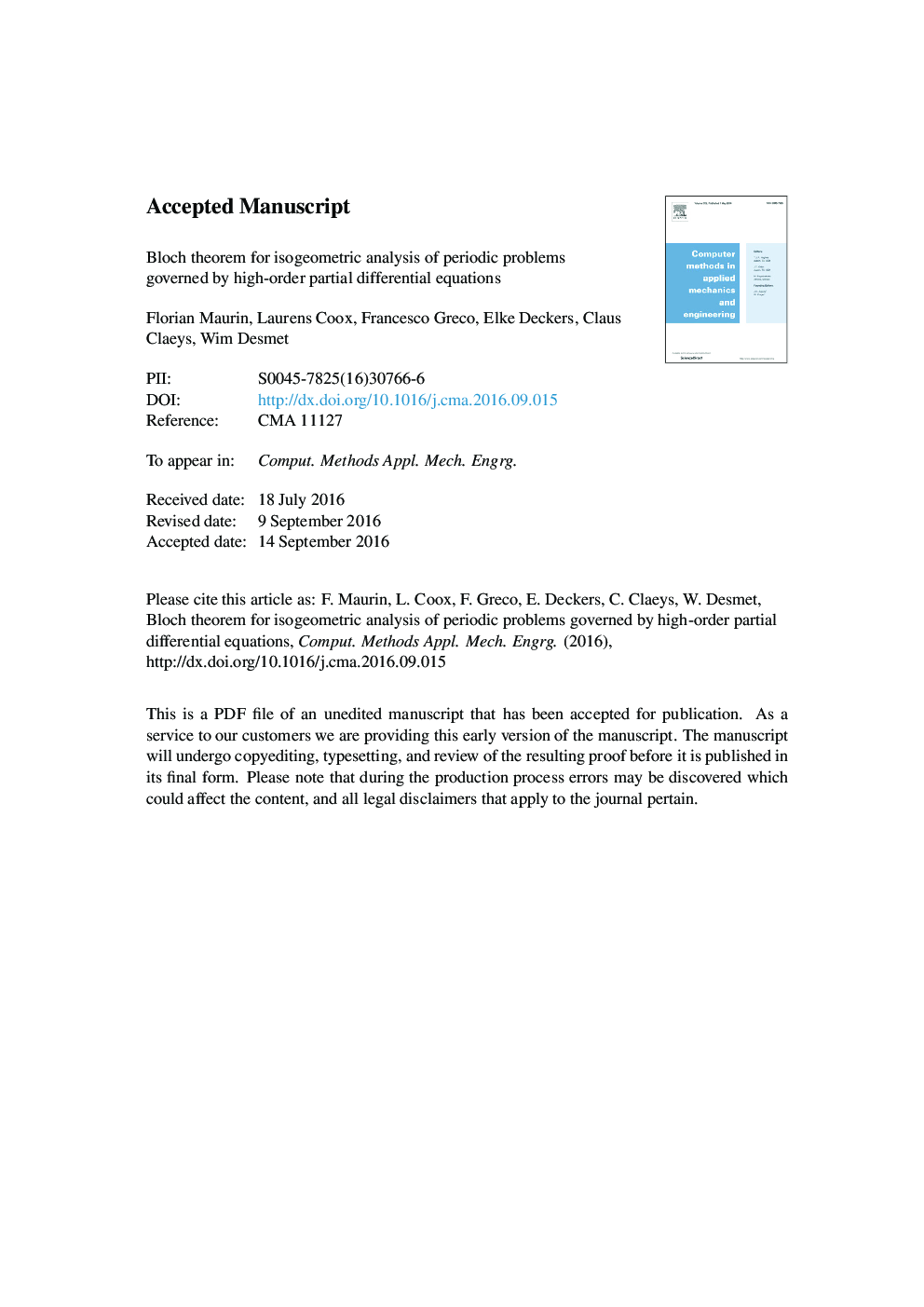| Article ID | Journal | Published Year | Pages | File Type |
|---|---|---|---|---|
| 4964087 | Computer Methods in Applied Mechanics and Engineering | 2016 | 38 Pages |
Abstract
With the emergence of isogeometric analysis (IGA), numerical rotation-free solutions to high-order partial differential equations (PDEs) are facilitated. Indeed, IGA allows the use of high-order-continuous basis functions through the domain. For periodic systems, the Bloch theorem is useful for analyzing wave propagation, restricting the analysis to a single unit cell and applying periodic boundary conditions. However, in the literature, boundary conditions are only accounting for C0-continuity, and we propose in the present paper to enforce the G1-continuity as well or to maintain the angle in case of unit cells meeting at kinks. While G1-continuity is enforced by maintaining the collinearity between adjacent control points, in the presence of kinks, variations of the field derived with respect to opposite in-plane edge normals are linked by the Rodrigues rotation matrix. This method applied at collocation points belonging to the unit cell edges can be viewed as a novel approach of coupling multi-patch geometries with kinks, avoiding the use of nonlinear multipliers or additional bending strip elements. Both transfer-matrix and indirect methods of the Bloch theorem are investigated, for respectively quasi-one and quasi-two-dimensional wave propagation in periodic structures discretized by NURBS-based IGA. Dispersion curves of a set of numerical problems treating isogeometric rotation-free extensible elastica (beams) and Kirchhoff-Love shells are then analyzed.
Keywords
Related Topics
Physical Sciences and Engineering
Computer Science
Computer Science Applications
Authors
Florian Maurin, Laurens Coox, Francesco Greco, Elke Deckers, Claus Claeys, Wim Desmet,
